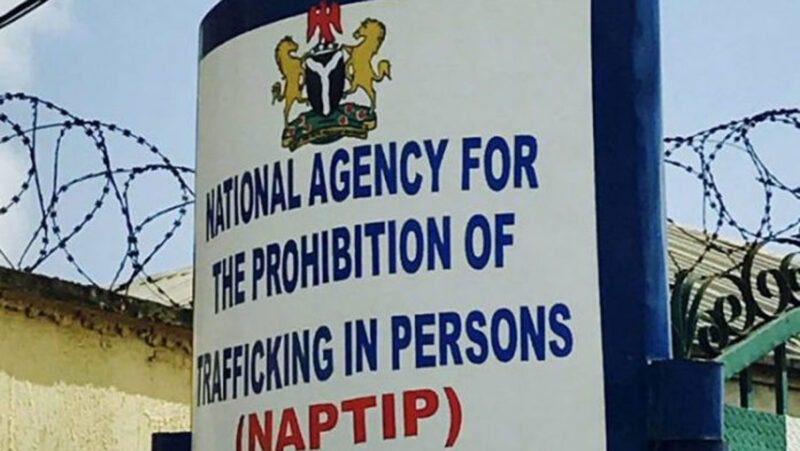Economic Issues
Enhancing Food Security In Nigeria: A Legal Analysis Of The National Agricultural Technology And Innovation Policy (NAPTIP) 2022-2027 -By Oyetola Muyiwa Atoyebi & Anthony A. Akejelu

INTRODUCTION
Food security has been defined as a situation in which “all people, at all times have physical and economic access to sufficient, safe and nutritious food that meets the dietary needs and food preferences for an active and healthy life.”[1] Thus, the four dimensions of food security include the physical availability of food, i.e. the local production or importation levels of food products; the economic and physical access to food; food utilization which refers to the nutritional value of the food and lastly the stability of the aforementioned.[2] Food insecurity is therefore measured in the context of the absence of any of the four dimensions outlined.[3]
While it is agreeable that food insecurity is a global phenomenon, the Nigerian situation has become of serious concern. According to a 2023 survey of the Global Hunger Index, Nigeria ranks 109 out of 125 countries with sufficient data to calculate the year’s GHI scores.[4] It further stated that with a GHI score of 28.3, the hunger level in the nation calls for serious concern. It was further shown by the report that there has been a gradual increase in the percentage of the undernourished population from the year 2008 to 2023.[5]Moreover, according to a survey conducted for about 14 countries, based on income, geographical location, among other factors, Nigeria placed one of the highest in terms of food insecurity using the standards of high yields, high per capita consumption and low inflation as indicators of food security.[6] It is thus without equivocation that Nigeria is food insecure.
Food security is an essential and indispensable part of the economic security of a nation which concomitantly represents a vital aspect of national security.[7] This accordingly underscores the import of agriculture not just to the physical sustenance of the people but also to the economic development of the nation as it contributed about 30% to Nigeria’s GDP in 2020 though a fluctuation has been witnessed since then owing to several challenges bedeviling the sector.[8] There has been an alarming deficit in the production and supply of food commodities to meet the ever-increasing demands of the nation’s growing population and this has continued owing to several factors including the limited use of modern technologies and innovative techniques in the production, processing and distribution of agricultural products in Nigeria. Another factor, among several others, is the shortage of facilities for the preservation of food resulting in the consumption of significant portions during harvest seasons thereby creating a deficit in non-harvest periods. Agriculture is thus, central to food security[9] and the recognition of this, led to the formulation of the National Agricultural Technology and Innovation Policy (NATIP) 2022-2027 to provide a policy framework for the improvement of the agricultural sector, taking cognizance of the potential impact of technology on the sector. This article will be analyzing the provisions of the Policy and its impact thus far on food security in the nation.
AN ANALYSIS OF THE NATIONAL AGRICULTURALTECHNOLOGY AND INNOVATION POLICY (NATIP) 2022-2027
The NATIP is divided into three substantial Parts with the introductory part discussing the background to the formulation of the policy, the various policy downsides encountered in the agricultural sector, providing an overview of the previous policies and strategies earlier adopted, their shortcomings, leading to lessons learnt for newer directions for NATIP, the mission and objective of the policy, among others. Part Two of the Policy discusses its context and scope while highlighting the components of the policy as well as its crosscutting interventions. Part Three analyses the implementation structure to be adopted for the policy. It enumerates the various committees which would perform various functions in order to ensure the proper and detailed implementation of the NATIP and concluded by assessing and evaluating the risks as well as the mitigation strategies for the Policy’s implementation. The Purpose of the policy is to provide a workable plan for the harnessing of the nation’s “untapped potentials through the massive deployment of 21st -century knowledge, technology and innovation in the agricultural sector to make Nigeria food and nutrition secure”[10] Realising that food security is a critical challenge in the nation, the Policy builds on previous efforts and implementation strategies to enhance same while taking cognizance of the challenges which had hitherto bedeviled their success and providing pro-technology strategies for mitigating same.
A studious dive into the Policy explicates the distress faced by the agricultural sector against a background of rapid population growth and infrastructural deficiencies including a limited level of awareness and adoption of productivity-enhancing technologies, inadequate research and innovation, overlapping policy institutions, inappropriate, uncoordinated and inconsistent policies, weak value chain development approaches, the low administrative capacity and a weak synergy among agricultural research institutions, limited private sector investment, etc[11]. It further accentuates the decline in the sector’s contribution to the GDP and its overall performance, particularly in crop production, which represents only about 50% of global best practices; livestock, forestry, and fisheries. The sector’s growth rates from 2002 to 2017 are presented, showing oscillations in performance across relevant sub-sectors.[12] The Policy however, acknowledges an increase in the involvement of the private sector in agriculture with a gradual decline in the direct involvement or intervention of the government, which is in line with the principles of the Comprehensive Africa Agriculture Development Programme (CAADP)[13]and this has positively impacted the growth of the agricultural sector. The NATIP adopts a sub-sectoral strategic planning approach to ensure that the fulcrum of its objectives are achieved in each of the subsectors with none lagging.
The Policy further took cognizance of past efforts at improving the agricultural sector including the preceding Green Alternative–Agricultural Production Policy APP (2016-2020) which though applauded for the realization of self-sufficiency in certain aspects of crop production, could not generate satisfactory widespread agricultural productivity and investment due to the poor deployment of technology and knowledge required. Moreover, the overlapping of duties among the various implementing institutions often resulted in inter-institutional rivalry and subsequently an inadequate implementation of policies and action plans. Some of the lessons learnt from past policies and strategies which hampered their effectiveness[14] include the weak involvement of stakeholders in policy formulation and implementation, the need for the reform of the Land Use Act to incorporate emerging issues such as the quota on land titling; the fact that the country had relied heavily on foreign researches, agronomic practices, technologies, etc., with little attention paid to the disconnect between research and training institutions on the one hand and policy makers, farmers, suppliers and processors and other key stakeholders on the other hand; the fact that the promotion of climate-smart agriculture has not received much attention and this has continued to affect productivity and causing issues such as land degradation, etc.
Furthermore, the document discusses policy support programs and actions, including revamping sectoral statistics generation, conducting regular studies and impact assessments, and advancing open data initiation and digitalization of agricultural statistics. It also addresses the strengthening and liberalization of artificial insemination and crossbreeding capacity, genetic conservation of indigenous livestock resources, animal feed development programs, ruminant animal production, processing, and marketing programs, and the promotion of innovative technologies in upscaling production. It further highlights the promotion of feedlots for livestock fattening, the development of model abattoirs, and the enhancement of capacity on trade negotiations and facilitation.
In addition, the Policy outlines initiatives aimed at improving national animal welfare standards, implementing guidelines for transboundary pests’ surveillance and control, developing quarantine curriculum in higher institutions, and strengthening national and regional policies and programs. It further emphasizes the need for partnerships in the surveillance and control of pests, migratory birds, and wildlife diseases, as well as the implementation of wildlife-associated Emerging Infectious Diseases (EIDs) surveillance programs. The lower cost of production to be realized from mechanization, the use of high-quality inputs, innovative practices and access to affordable credit would fast track the industrialization process, create new high-income jobs and enhance the international competitiveness of the Nigerian agricultural products.
A multi-stakeholder approach is proposed for the development of clusters, rural cottage industries, rural nodal centers, and the establishment of Special Agro-processing Zones (SAPZs) to supplement efforts in linking the agricultural sector with the industrial/processing sector. The ultimate goal is to restore industrialization and create at least one million new jobs in the country through these initiatives.
The Policy outlines several risk elements which may hamper its effective implementation under various subheadings including insecurity, political risks such as poor governance or weak implementation strategies; social risks such as corruption, bureaucracy, dishonesty, the downsides of the Public Procurement Act and externalities etc.; administrative risks such as the poor management of projects, inadequate personnel with requisite skills or limited technical know-how of implementing officials; economic or financial risks such as the unstable economic situation in the nation resulting in inflation in the prices of commodities and equipment, unstable exchange rate, delayed release of project funds, etc.; environmental risks including climate change and natural disasters. It further summarises the approaches and schemes aimed at mitigating these risks in the implementation of the Policy with a focus on the use of legislation to stabilise government policies, ensuring government commitment to addressing national security challenges, guaranteeing stable minimum prices of commodities to stabilise farmers’ incomes, expanding insurance coverage for farmers and other stakeholders in situations of environmental hazards, promoting awareness of agricultural insurance, promotion of accountability in the execution of public projects etc.[15] Moreover, it emphasizes the importance of accurate data and information management in agricultural policy and strategy, highlighting the need for better coordination, robust monitoring, and implementation mechanisms.[16] The National Agricultural Data Management and Information System (NADMIS) is proposed to be completed and implemented in collaboration with states, local government areas, line departments, and relevant partners, as this multi-stakeholder involvement and implementation will no doubt ensure its effectiveness.
Having regard to the constitutional power sharing between the Federation and the states on the subject of agriculture, the implementation of the NATIP is expected to foster mutual responsibility and eliminate issues of policy overreach between the two tiers of government or complacency on the part of the states. [17]
In summary, the major components of the NATIP include knowledge creation and transfer, MDAs alignment and synergy, securing agricultural lands and investments, rapid mechanization, strengthening value-chains for priority crops, etc.,[18] and its cross-cutting interventions include the promotion of digital and climate smart agriculture, the management of relevant data and information, sustainable use of resources, creation of a national food reserve for food security among others.[19]Overall, the document provides a comprehensive overview of the challenges and initiatives in the agricultural sector, emphasizing the need for collaborative efforts to address issues such as declining sector performance, animal welfare, pest control, leather industry revitalization, and strengthening agricultural value chains in order to enhance food security and jobs and wealth creation in the nation.
There is no gainsaying the fact that NATIP contains very laudable policy strategies for the development of the agricultural sector in line with the extant National Development Plan for the revitalization of the nation’s economy. However, the impact of the policy on the nation’s agronomy is yet to be felt after two years of formulation. While it may be argued that it is too early to assess the impact of the policy, one cannot also deny that the challenges bedeviling the nation’s food sector seem to be snowballing in recent times. According to a 2023 issue paper by the International Monetary Fund,[20] food inflation in Nigeria, rose to 23% in September 2022, while the data of people in stressed food security conditions obtained from a survey of 26 states and the FCT stood at 34% in November 2022 and this is estimated to be on a continuous increase. While several factors were enumerated by the paper as responsible for this, it is strongly believed that a proper implementation of the NATIP through the adoption of synergized agric-stakeholders labour and the use of pro-technology strategies, will cause significant improvements in the nation’s overall agricultural production rate thereby making outputs scale up to meet demand at reduced cost, a vital indicator of food security.
Moreover, another aspect which need to be considered in order to enhance the proper implementation of the Policy is the revision of the extant legislations on agriculture. Although there has been new enactments in some aspects,[21] much legislative attention need to be given to the reform of the Land Use Act 1978, among other laws as, being obsolete, it does not take cognizance of trending issues on land ownership and titling, a challenge which was identified by NATIP. Hence, legislative amendments and re-enactments will go a long way in assisting the effective implementation of the NATIP.
CONCLUSION
The NATIP is no doubt a laudable policy document aimed at improving the agricultural sector of the nation thereby enhancing food security and economic development. However, it is expected that the implementation of the policy will take diverse approached including legislative responses, synergized multi-stakeholders commitment, improved accountability and monitoring of implementing institutions among others.
KEYWORDS:
food security, national agriculture technology and innovation policy, agriculture policy 2022-2027, agricultural development, national development plan.
SNIPPET:
The NATIP is a laudable policy document aimed at improving the agricultural sector of the nation thereby enhancing food security and economic development. However, it is expected that the implementation of the policy will take diverse approached including legislative responses, synergized multi-stakeholders commitment, improved accountability and monitoring of implementing institutions among others.
AUTHOR: Oyetola Muyiwa Atoyebi, SAN FCIArb. (U.K)
Mr. Oyetola Muyiwa Atoyebi, SAN is the Managing Partner of O. M. Atoyebi, S.A.N & Partners (OMAPLEX Law Firm).
Mr. Atoyebi has expertise in and vast knowledge of Technology Law and this has seen him advise and represent his vast clientele in a myriad of high-level transactions. He holds the honour of being the youngest lawyer in Nigeria’s history to be conferred with the rank of Senior Advocate of Nigeria.
He can be reached at atoyebi@omaplex.com.ng
CONTRIBUTOR: Anthony A. Akejelu
Anthony is a member of the Dispute Resolution Team at OMAPLEX Law Firm. He also holds commendable legal expertise in Technology Law and Practice.
He can be reached at anthony.akejelu@omaplex.com.ng
[1] 1996 World Food Summit, cited in “An Introduction to the Basic Concepts of Food Security” Food Security Information for Action Practical Guidelines; A publication of the Food and Agricultural Organisation, 2008; 1 available at https://www.fao.org/3/al936e/al936e00.pdf accessed on the 20th of January 2024.
[2] See ‘What is Food Security’ A publication of the World Bank available at https://www.worldbank.org/en/topic/agriculture/brief/food-security-update/what-is-food-security accessed on the 20th of January 2024.
[3] See Ahmad Nafees, Shahnawaz, S.K and Alam, Zaid, ‘Food Insecurity: Concept, Causes, Effects and Possible Solutions; IAR J Huma Soc Sci; 2021; 2(1): 105-113 available at https://www.researchgate.net/publication/356613463_Food_Insecurity_Concept_Causes_Effects_and_Possible_Solutions accessed on the 20th of January 2023.
[4] ‘Nigeria-Global Hunger Index’ A Publication of Concern Worldwide and Welthungerhilfe; 2023 available at https://www.globalhungerindex.org/nigeria.html accessed on the 20th of January 2023.
[5] Ibid.
[6] Alun Thomas and Rima Turk, “Food Insecurity in Nigeria: Food Supply Matters”, IMF Selected Issues Paper, (2023), pg. 5 available at https://www.imf.org/-/media/Files/Publications/Selected-Issues-Papers/2023/English/SIPEA2023018.ashx accessed on the 20th of January 2023.
[7] Ahmad Nafees et al. op cit. fn. 3
[8] See ‘Contribution of Agriculture to GDP in Nigeria from the 3rd Quarter of 2019 to the 3rd Quarter of 2021’ (STATISTA; 2021) available at https://www.statista.com/statistics/1193506/contribution-of-agriculture-to-gdp-in-nigeria/ accessed on the 20th of January 2024.
[9] See the Economic Growth and Recovery Plan (EGRP), 2017-2020, which recognized agriculture as central to rural development, social inclusion, food security and lifting 100 million Nigerians out of poverty. Available at https://nigeriaembassygermany.org/mosaic/_M_userfiles/Economic-Recovery-Growth-Plan-2017-2020.pdf accessed on the 20th of January 2024.
[10] Ibid. p.2
[11] Pg. 10
[12] Pg.11
[13] The CAADP Agenda 2063 is an African Union initiative aimed at assisting African nations in eliminating hunger and reducing poverty by fostering economic growth through agriculture and development. See ‘The Comprehensive African Agricultural Development Programme’ (AFRICAN UNION) 2021 available at https://au.int/en/articles/comprehensive-african-agricultural-development-programme accessed on the 18th of January 2024.
[14] Ibid. pp. 17-18
[15] See pp. 82 and 83 of the Policy Document.
[16] Ibid. 82
[17] Ibid page 21
[18] Pg. 22
[19] Ibid. 22-23.
[20] Alun Thomas and Rima Turk, op cit. fn. 6.
[21] For instance the National Agricultural Seeds Council Act 2019, the National Fertilizer Quality (Control) Act, 2019, the Plant Variety Protect Act of 2021, etc.



















